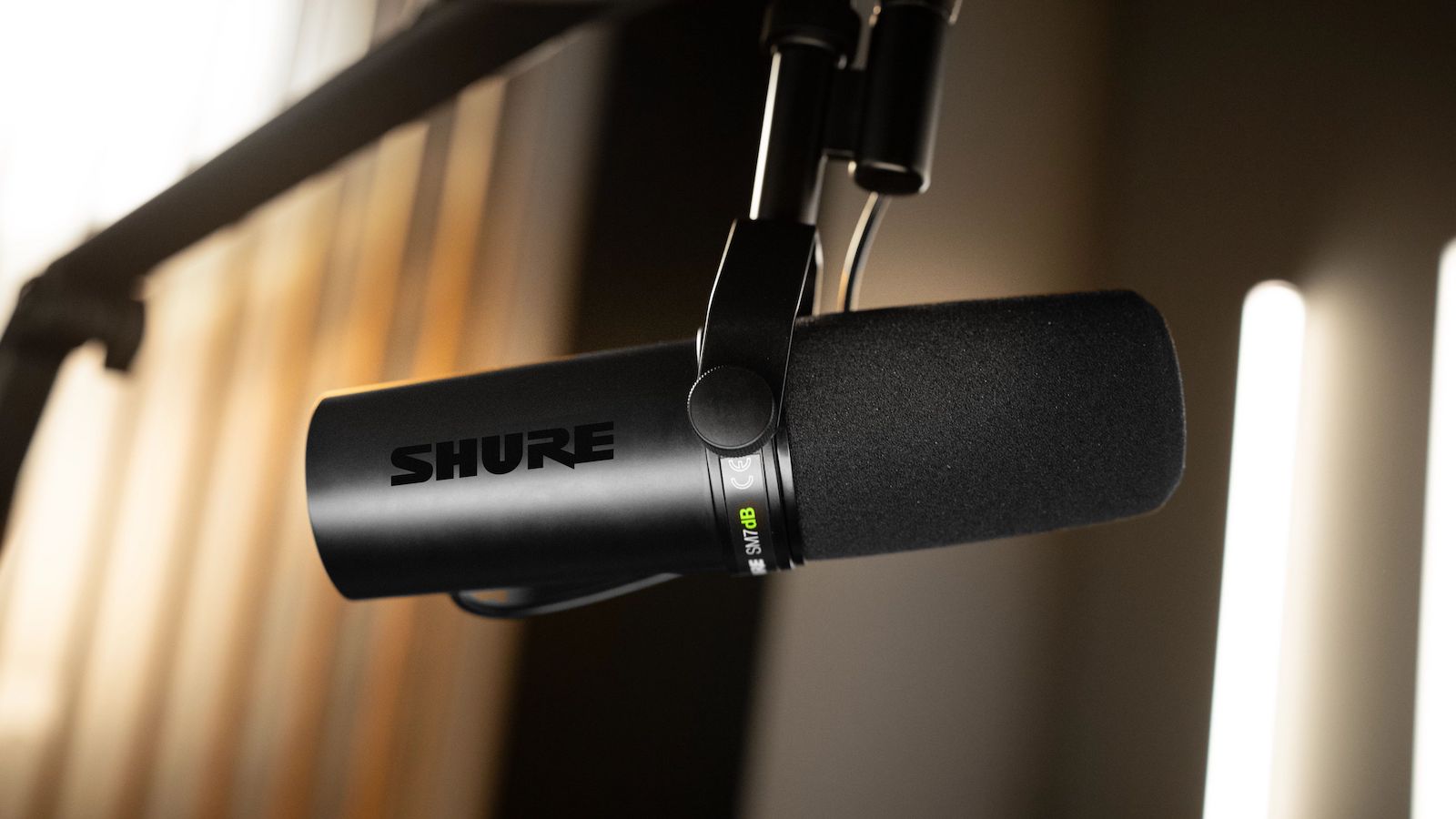The Shure SM7dB is set to bring the iconic SM7B sound to whole new generation. But what makes this dynamic microphone with an active onboard preamp so special?
The SM7dB packs an extra +28dB of clean gain inside, making it perfect for nearly any recording setup.
At its heart, this mic was designed to sound just like an SM7B. In fact, you can operate it in Bypass mode and for all intents and purposes that’s exactly what you’ll have. The SM7dB delivers the familiar warm tone adored by podcasters, musicians and content creators alike. Shure engineers have painstakingly ensured that it has the same sound signature as the original SM7B.
The key difference, therefore, is the active preamp designed by Shure inside, giving each SM7dB enough output level to work with any XLR interface. Providing up to +28 dB of low-noise, flat, transparent gain, the onboard preamp preserves the mic’s frequency response for a clean, classic sound. All you need is an interface or mixer offering +48V phantom power to operate the preamp.
If you look at the back panel of the SM7dB, you’ll see the bass roll-off and mid-range presence boost controls shifted slightly upwards compared to an SM7B. This is to make space for the two-step switch giving you either +18dB or +28dB of extra gain, as well as the Bypass mode switch to deactivate the preamp entirely.

To boost or not to boost - that is the question.
Why the two different levels of extra gain or none at all? When miking loud sound sources like a guitar cab or snare drum, you’ll likely want to use +18dB or bypass the preamp for the original SM7B output level. But if you’re podcasting or recording quiet vocals select the full built-in boost of +28dB. The SM7dB offers you unprecedented freedom to tailor the mic to your specific recording needs.
Whether you’ve activated the preamp or not, you’ll get the same great detail in your recordings from a proven dynamic cartridge and frequency range of 50 to 20,000Hz. You’ll hear all the highs and lows for truly natural sounding audio.
So where does that famous ‘radio voice’ come from? Good question! The dynamic cartridge and voice coil in both versions of the SM7 are optimized to deliver an extended low frequency response, a flatter response curve overall, and a polar pattern that is especially tight at the higher frequencies. They’re also transformerless for the cleanest possible signal path.
Speaking of polar patterns, the SM7dB, of course, also utilizes a cardioid pickup pattern to help isolate your voice (or other sound source) from any background noise. This makes it great for capturing warm, crisp audio in less-than-ideal podcasting or streaming spaces.
Another important feature preserved from the SM7B is the highly effective pop filter that eliminates the need for any add-on protection against explosive breath sounds, even for close-up vocals or narration. It’s just another reason this mic has come to dominate podcasting.
Physically, you’ll notice the SM7dB is ever so slightly longer than the original. How much longer? About 1 centimeter to accommodate the preamp inside. Shure also gave the SM7dB its own special black finish. In the box, you’ll also get a bigger, close-talk windscreen, as well as a 3/8” thread stand adapter.

